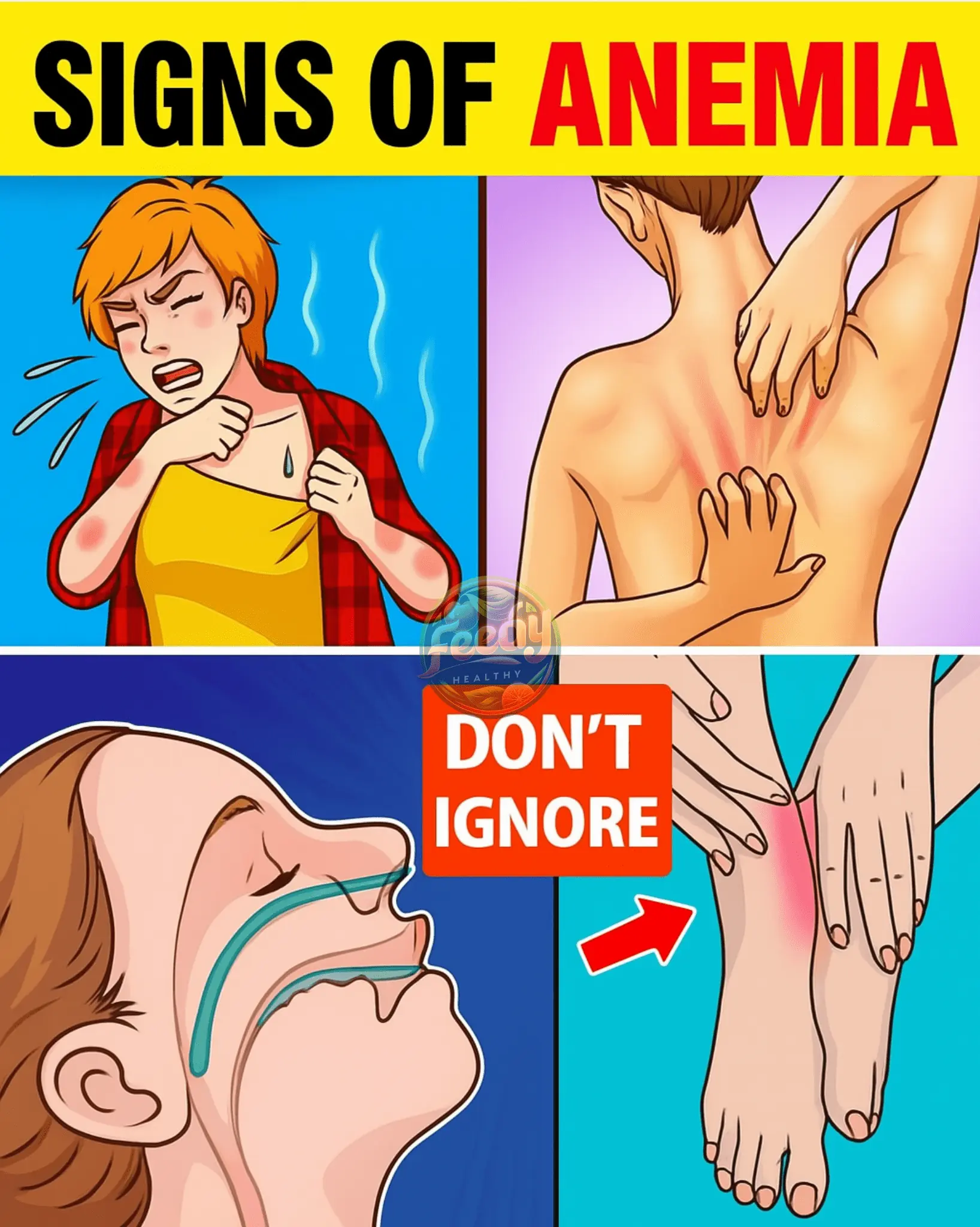
12 Silent Signs of Anemia You Should Never Ignore
Anemia is a condition where your body lacks enough healthy red blood cells to carry sufficient oxygen to your organs and tissues. While some symptoms are obvious, many are easy to miss—mistaken for everyday stress or exhaustion.
If left untreated, anemia can lead to serious complications. Here are 12 subtle but critical signs to watch for:
1. Persistent Fatigue
Feeling constantly tired even after a good night’s sleep? That sluggishness could be due to reduced oxygen delivery to your muscles and brain, leaving you drained throughout the day.
2. Pale or Yellow-Tinged Skin
Take a look at your face, inner eyelids, or nail beds. If they appear pale or slightly yellow, it may be a sign of reduced red blood cell count—a common indicator of anemia.
3. Shortness of Breath
Struggling to catch your breath after light activity like walking or climbing stairs? Your body may be trying to compensate for low oxygen levels by increasing your breathing rate.
4. Dizziness or Lightheadedness
Feeling woozy when standing up or moving suddenly can signal poor oxygen flow to your brain. In more severe cases, anemia can even lead to fainting spells.
5. Cold Hands and Feet
When oxygen is limited, your body prioritizes vital organs. As a result, blood flow to the hands and feet decreases—making them feel unusually cold.
6. Frequent Headaches
Recurring headaches or migraines can be triggered by reduced oxygen in your bloodstream. Your brain’s blood vessels may dilate in response, causing pressure and pain.
7. Heart Palpitations
If your heart is racing or beating irregularly, it might be working overtime to circulate oxygen. Palpitations can be a warning sign that your cardiovascular system is under strain.
8. Chest Pain
In severe or long-term cases of anemia, chest pain or tightness—especially in people with heart conditions—should be taken seriously. It may indicate the heart is being overworked.
9. Brittle Nails or Hair Loss
When the body lacks iron or nutrients, it redirects resources away from hair and nails. This can cause hair thinning or brittle, fragile nails.
10. Unusual Cravings (Pica)
Do you crave ice, dirt, clay, or starch? This strange urge is known as pica and may signal iron deficiency anemia.
11. Restless Legs Syndrome (RLS)
Anemia, particularly iron deficiency, can cause crawling or tingling sensations in the legs—especially at night—resulting in the constant need to move.
12. Loss of Appetite
A reduced desire to eat—especially in children—can be an early sign of anemia. Over time, this can affect growth and lead to more nutrient deficiencies.
When to See a Doctor
If you experience several of these symptoms, don’t ignore them. Anemia can be caused by:
Iron, vitamin B12, or folate deficiency
Chronic illnesses like kidney disease or cancer
Heavy menstruation or internal bleeding
Bone marrow disorders
A simple blood test can confirm if your hemoglobin or iron levels are low.
Treatment and Prevention
Treatment depends on the cause, but the most common type—iron deficiency anemia—is usually managed through:
Iron-rich foods (red meat, leafy greens, lentils, beans, fortified cereals)
Iron supplements (as advised by your doctor)
Vitamin C-rich foods (like oranges, bell peppers, and tomatoes) to improve iron absorption
Other types may require B12 or folate supplements, medications, or even blood transfusions in severe cases.
Final Thoughts
Anemia doesn’t always shout—it often whispers through subtle signs like fatigue, pale skin, and cold extremities. But your body is trying to tell you something.
Listen to those signals. Early diagnosis and treatment can dramatically improve your energy, concentration, and quality of life.
If you found this article helpful, share it with someone who may need it. You just might change a life.